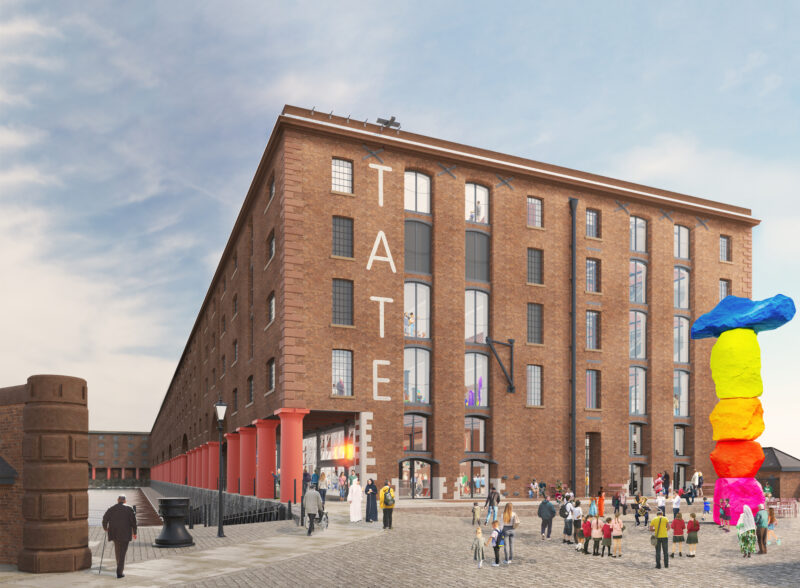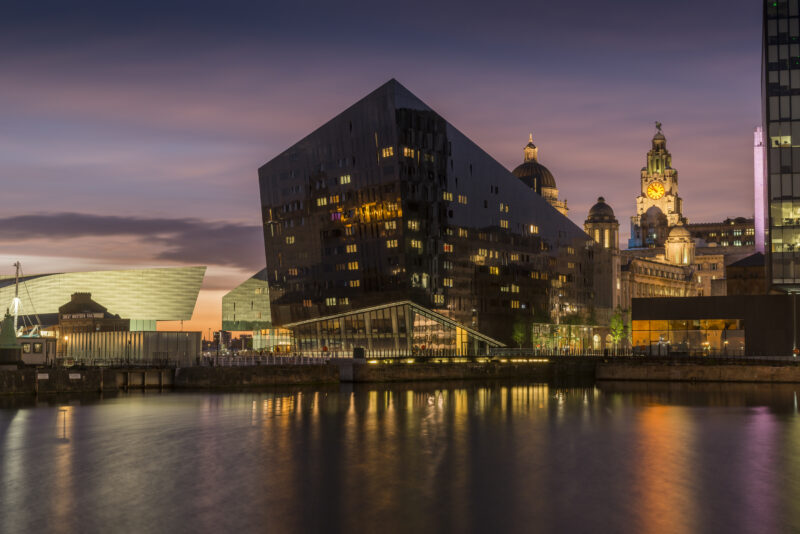“Love takes off masks that we fear we cannot live without and know we cannot live within.”
James Baldwin (1924-1987), American novelist and social critic
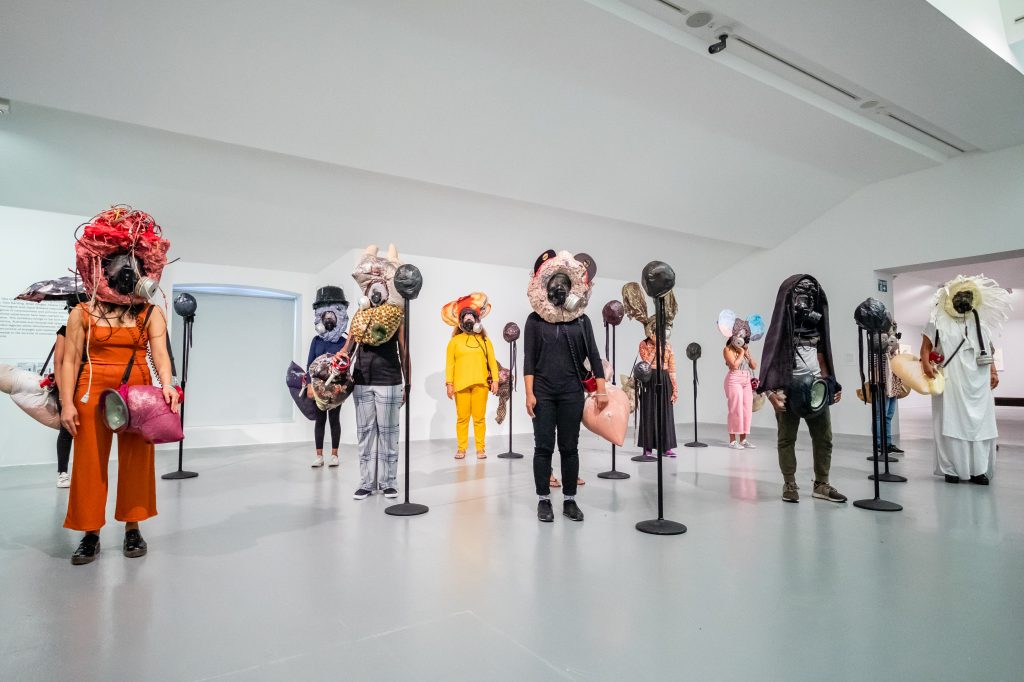
Kevin Beasley, Your face is/is not enough, 2018. Performance at Tate Liverpool, Liverpool Biennial 2018, 14 July 2018. Image courtesy the artist and Casey Kaplan, New York. Photo: Pete Carr
There is something arbitrary about Your face is/is not enough (2016) by Kevin Beasley being performed at Tate Liverpool for the first time as a part of the Liverpool Biennial, and even more arbitrary that the work is in their collection. Considering the sculptural performance-based installation was originally conceived for a public space within the Renaissance Society at the University of Chicago, it made me question the autonomy of power in the context of contemporary art and what it really means to perform a piece like this as a part of Liverpool Biennial’s 10th edition, Beautiful World Where Are You? Examining the history of Liverpool’s slave trade tracing back to 18th century and the claims of the Tate family sugar plantations’ connection to the trade, it can be stated that the presentation of the work and the context it is showing in brings a new meaning to the work.
Curated by Sally Tallant (Director, Liverpool Biennial) with the Liverpool Biennial team and the guest curator Kitty Scott (Carol and Morton Rapp Curator, Modern and Contemporary Art at the Art Gallery of Ontario), the selection of artists exhibited on the 4thfloor gallery of Tate Liverpool as one of the biennial venues are rather lazy; alongside with Kevin Beasley’s work, Brian Jungen’s series of sculptures consisting of carved ‘feathers’ from the soles of Nike trainers resembling Cheyenne-style war bonnets are presented in the same gallery room. Dale Harding however, has created a new wall-based work for the gallery facing Kevin’s installation that is inspired by rock art sites in Queensland and uses a stencil technique practised by the artist’s ancestors. In the other rooms, there are drawings by the artist Annie Pootogook that serve as a diary of the artist’s life and are indicative of the sulijuk (‘true’ or ‘real’) tradition. Duane Linklater’s sculptural works in the other room, however, explore the notions of cultural loss, social amnesia and identity from the perspective of the indigenous peoples in Canada through commenting on the economy of the fur trade. It seems that each work that is selected for the galleries on the fourth floor either responds to cultural identity politics or indigenous history. Paradoxically, this presentation othered these artists from the rest of the artists in the Biennial.
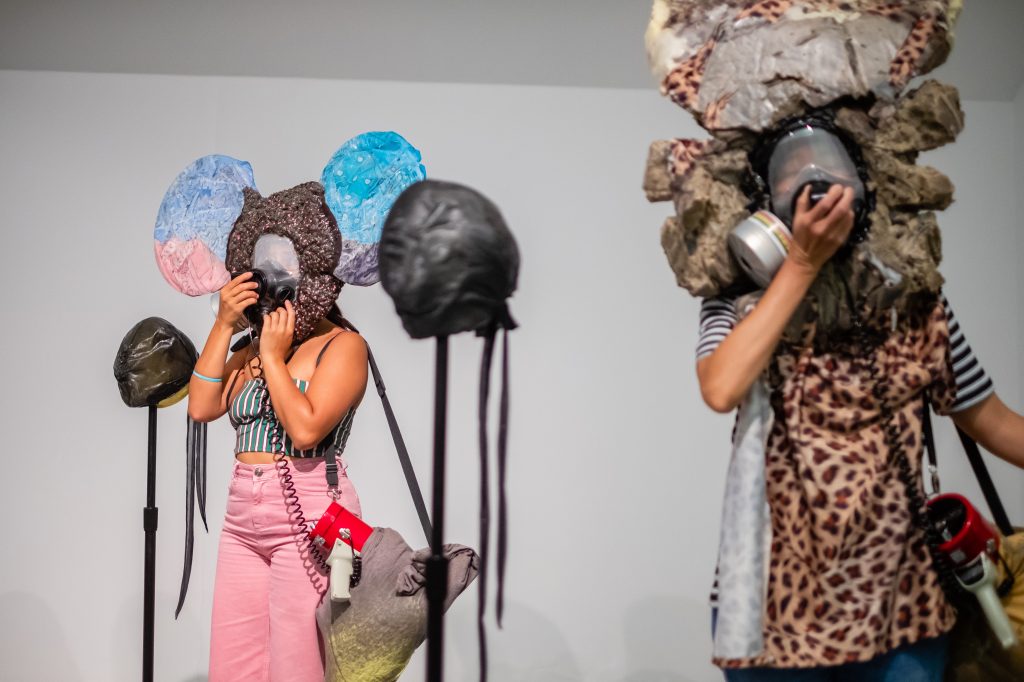
As an artist who is based in Brooklyn, New York with roots to Valentines, Virginia and who is of colour, Kevin’s sculptures are novel hybrids of assemblage and process art that excavate their personal and cultural meanings through his own autobiographical experiences. By using found materials like resin and polyurethane foam as the glue that holds the items together, Kevin produces his sculptures through a process of moulding and manipulating the adhesive material and objects into a final form. The twelve NATO-issued gas masks are adorned in a particular way paired with altered megaphones treated with different materials. They each look distinctive and unique. One has striking guinea fowl feathers, while another is comprised of entangled electric cables. A few of the masks are transformed into sculptural extensions of housedresses and articles of clothing. Each mask differs from the other in a unique, symbolic way.
Over the years the imagery and accessibility of gas masks have been alarming. One way or another we became immune to them. Particularly with law enforcement and the kind of militarisation we’ve seen with protests around the world, the mask holds a certain power. Whether it is an official behind the mask in front of a protestor or a protestor trying to avoid the spray gas, whether in the Gezi protests in Istanbul, Syntagma Square protests in Athens or Occupy Wall Street in NYC, the possibility of what the gas mask is capable of and who it’s for is an element that is significant to the work. With increasing incidences of political unrest around the world, anxiety and the lack of security that we are facing on a day to day basis, the meaning of the masks and what they symbolise becomes something uncanny. The civilian gasmask has become a symbol of environmental pollution, a sinister image, and a fetish object, as well as a relic of life with strong historical connotations.
In a low-ceilinged room with transparent glass doors, ironically called the Hospitality Room at Tate Liverpool, we sit in a circle. Kevin smiles and asks everyone to present themselves. The performers are of ethnic minority background as requested on the open call for the performance on the Biennial’s website link; ‘We are aiming to assemble a diverse range of performers, therefore we encourage applications from candidates with a Black, Asian or ethnic minority background’ the call out stated. There was a sense of familiarity in the room. It was always the artist’s intention to include participants of ethnic minority and of colour, and this had a clear effect on the dynamics in the room.
After the short introductions and explanation to Kevin’s piece, everyone in the room formed an immediate bond, at that moment I felt accomplishment at coordinating and being a part of such a vibrant group of people. Everyone was curious about the masks and asked Kevin many questions and he took the time to answer all of them. The performers were then invited to go upstairs to the 4th-floor gallery where the masks were presented on their stands. Following the artist’s demonstration on how to handle the masks, the performers were invited to touch the masks and see how the microphone pieces worked. Getting acquainted and familiarised with the masks was encouraged by the artist.
There were two days of rehearsals, taking three hours daily before the first performance at the professionals’ preview on Thursday. On the second day of the rehearsal and the rest of the performances, two art conservators were present to take notes on the changes to the masks. This made the work feel ephemeral. After each performer chose their individual mask, Kevin briefed everyone with simple instructions; after walking over from different directions towards each stand, all of the performers were going to start with three deep breaths and a very long ‘Aaaaaaahhhh’ cry with thirty repetitions. Despite the fact that this act might sound effortless and simple, it holds a powerful, poignant impact. The discomfort the mask gave to the performer while breathing and its claustrophobic nature was another crucial element of the performance. The performance started at the ground level, near to the entrance and not all of the performers could walk up four flights of stairs- especially with the low ceilings. A curator from Tate, the artist and I coordinated how these performers would go all the way up to reconvene outside of the fourth-floor gallery. This created a tension and curiosity from the audience. Following Kevin, all the performers gathered from different directions into the gallery walking around other sculptures and spectators in the room, finally standing by each of the masks’ stands.
Standing behind their masks with limited view, each participant slowly adjusted their microphone and started breathing heavily. There was a tension in the room. Following the deep breathing, the intensifying cacophony began. The more the performers continued this act, the more the sound intensified and the silence in-between disappeared. In the current geopolitical climate and on-going otherness we are facing in a post-Brexit, “fake” news, Trumpian era, the work couldn’t be more meaningful. I closed my eyes and immediately all of the feelings I had against the world we live in intensified. Each performer shared a different pitch, a different sound which made the cacophony captivating. I lost track of time while this sound intensified, and suddenly there was heavy breathing again. The performers for the first time removed their masks standing to face the spectators. They then adjusted their masks to place them on their stands, while some performers helped others around them. This action of placing the masks back on their stands, helping each other and settling back to their places added to the tension. Then there was silence. There was an awkwardness in this silence that lasted at least two minutes since the audience wasn’t sure what to expect, and then everyone started clapping in unison. Following the performers in a line, along with Kevin, I went back down to the Hospitality room where we all had a sense of satisfaction, relief and joy.
Looking back now at my experience and role as a guest curator for the full duration of 2.5 months as a part of the Liverpool Biennial where I had little autonomy in comparison to the large structure of the Biennial team and organisation, questioning the notion of power and what it means is significant to me. In Your face is/is not enough Kevin both shifts the power role and plays with theatricality and spectatorship through a powerful act of protest.
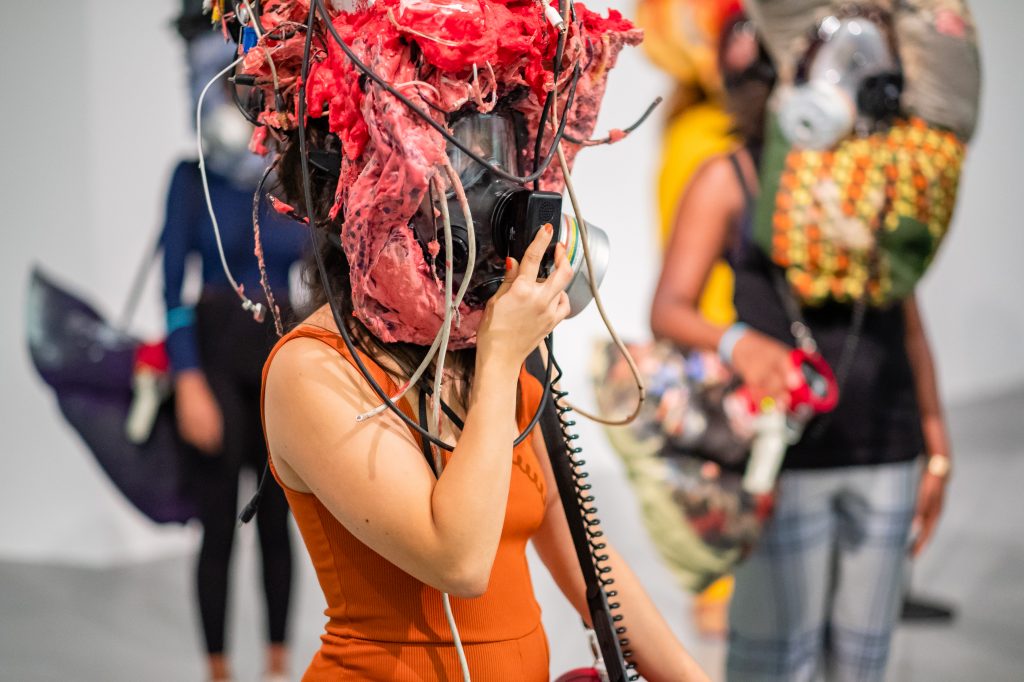
Kevin Beasley, Your face is/is not enough, 2018. Performance at Tate Liverpool, Liverpool Biennial 2018, 14 July 2018. Image courtesy the artist and Casey Kaplan, New York. Photo: Pete Carr


